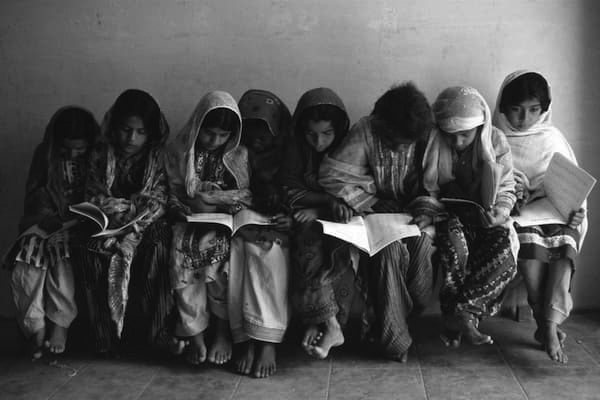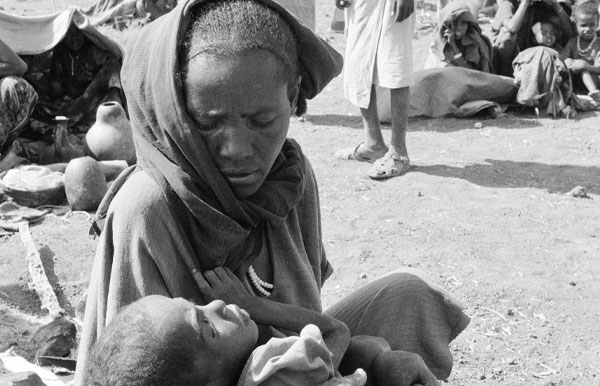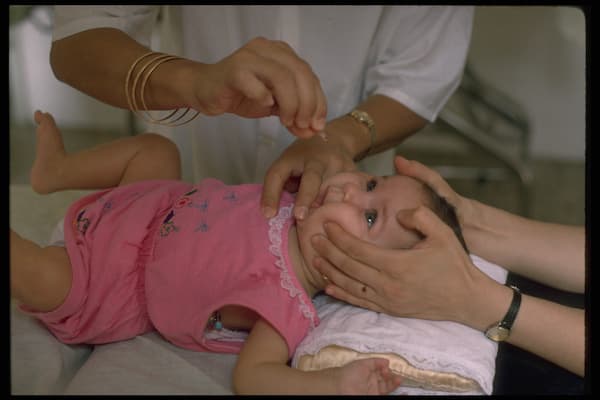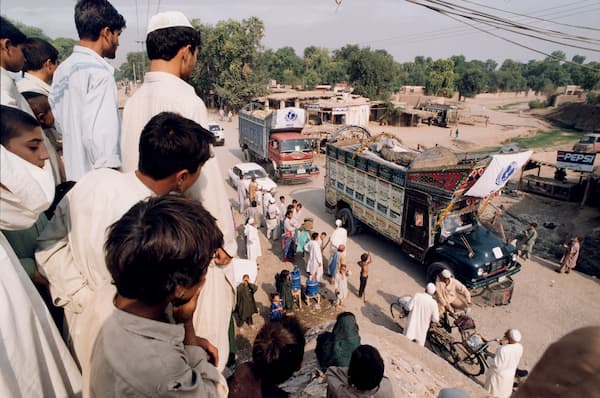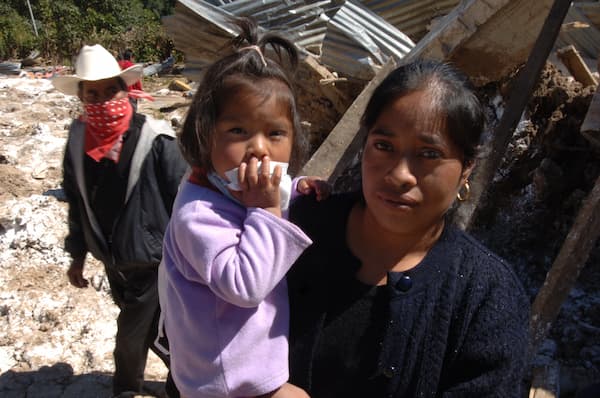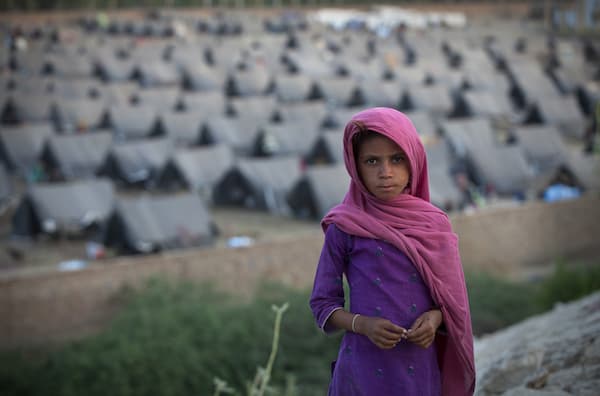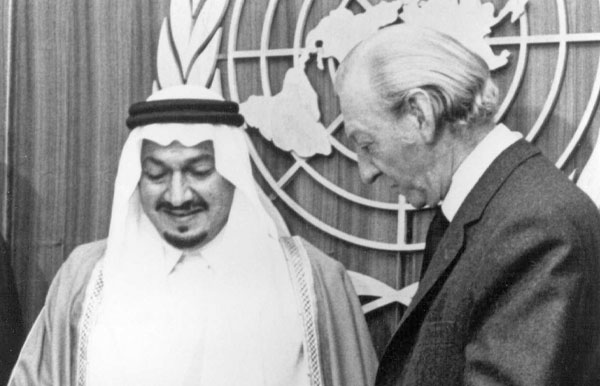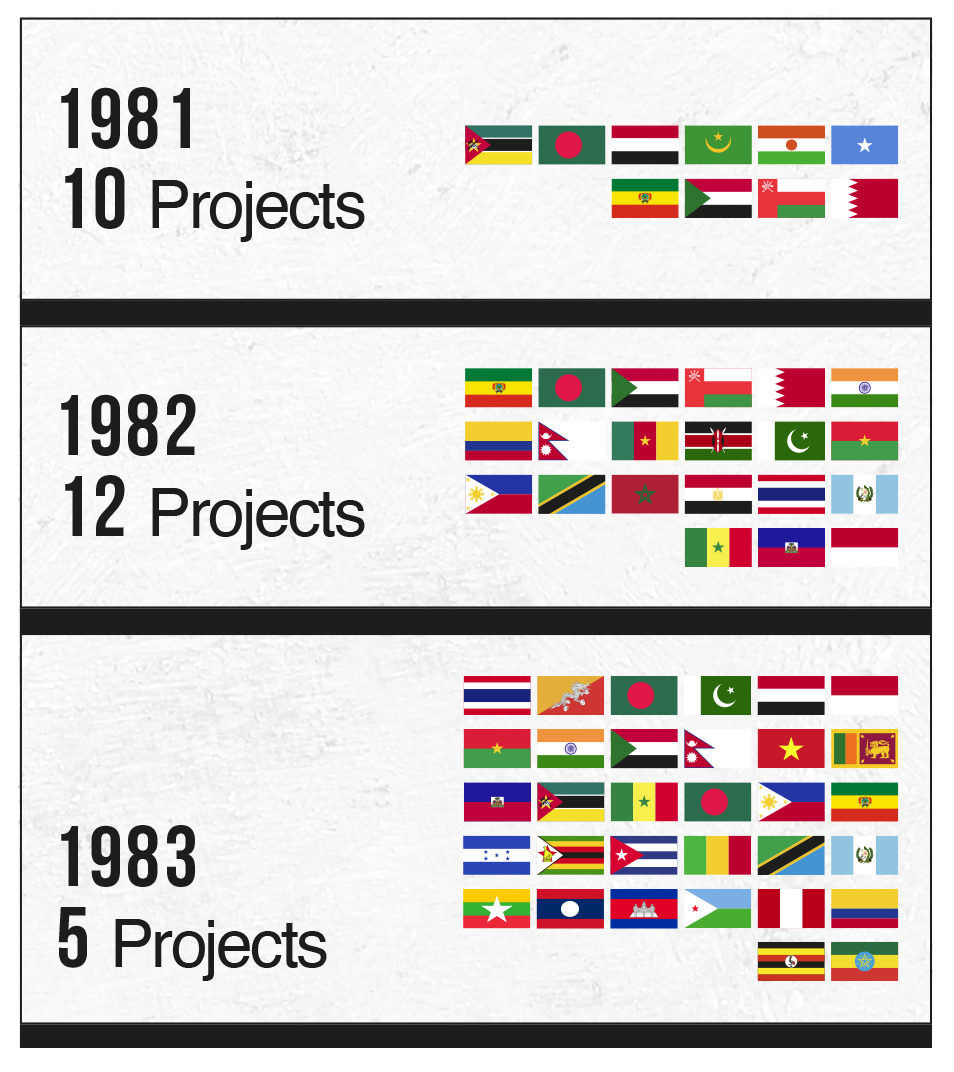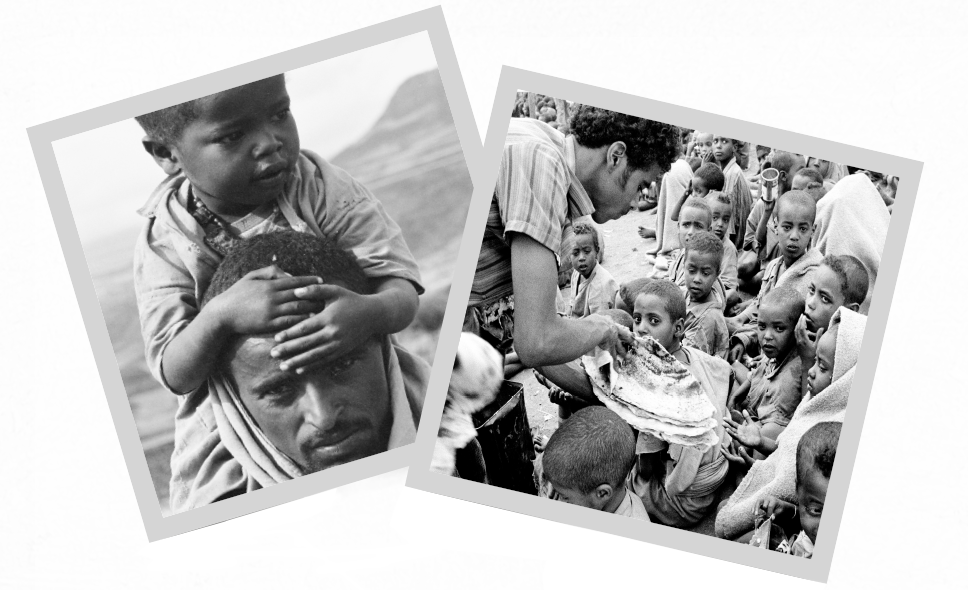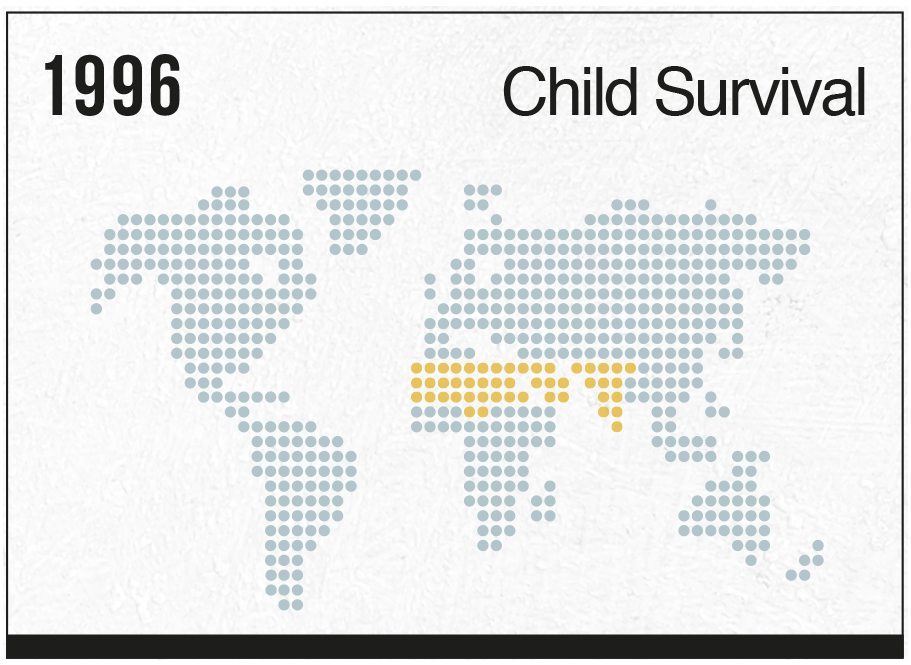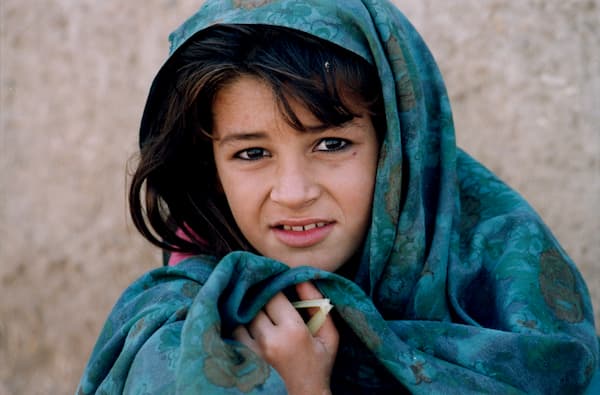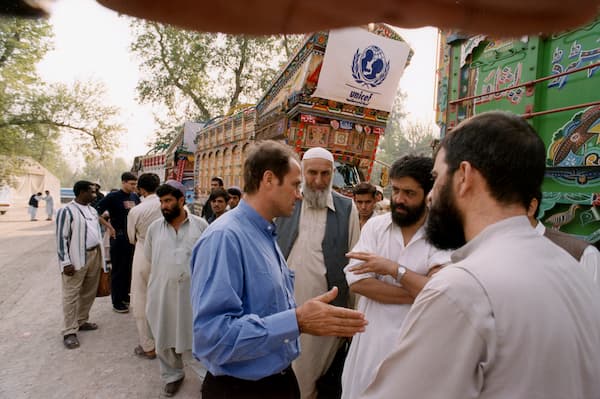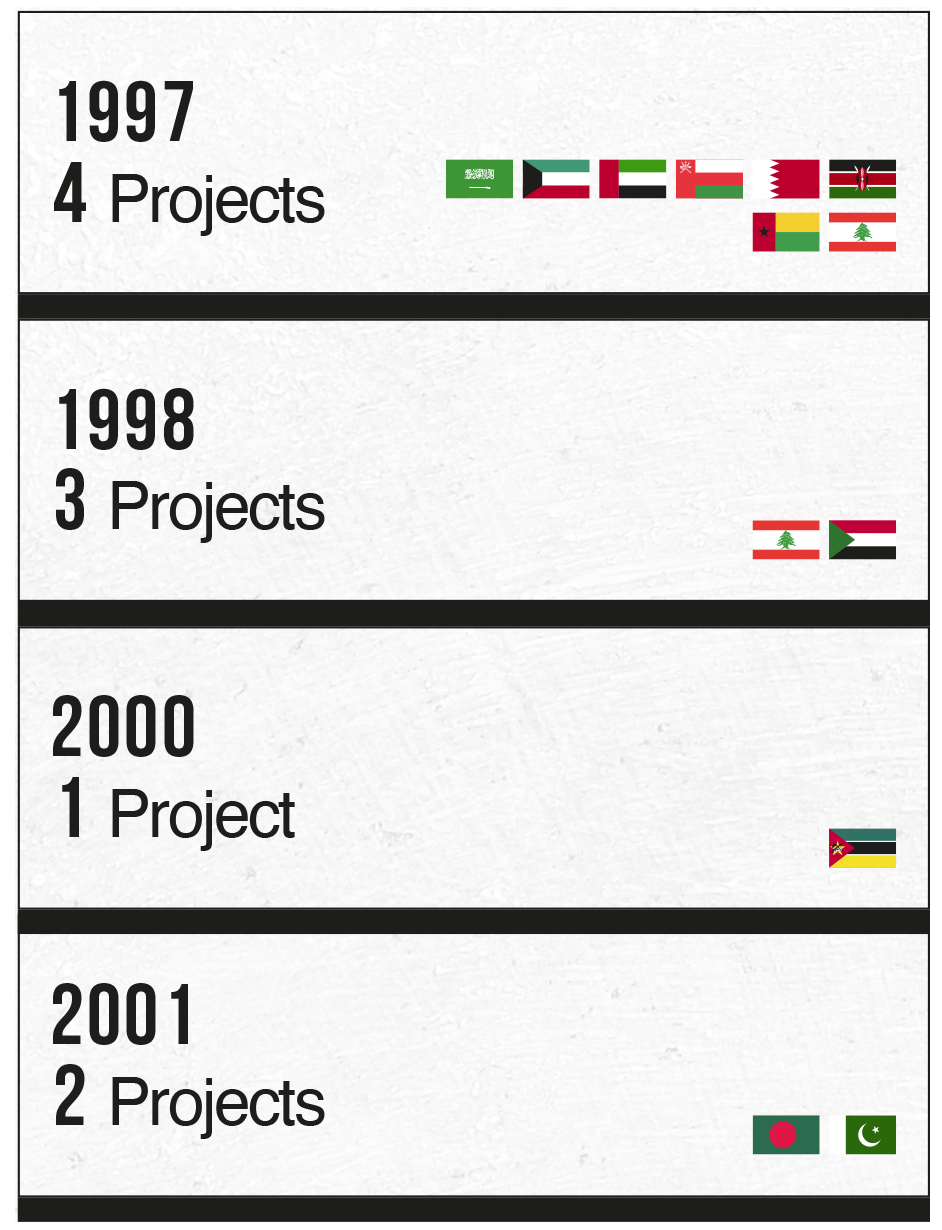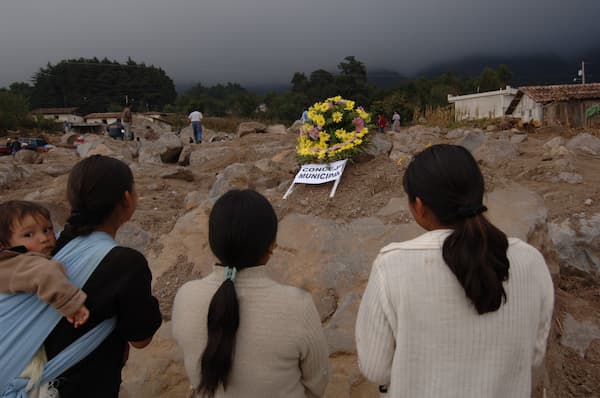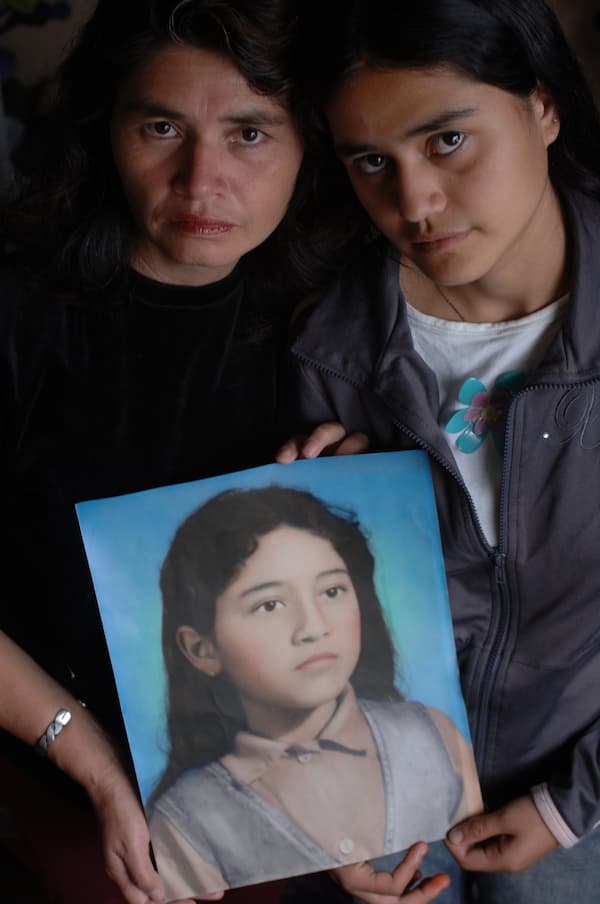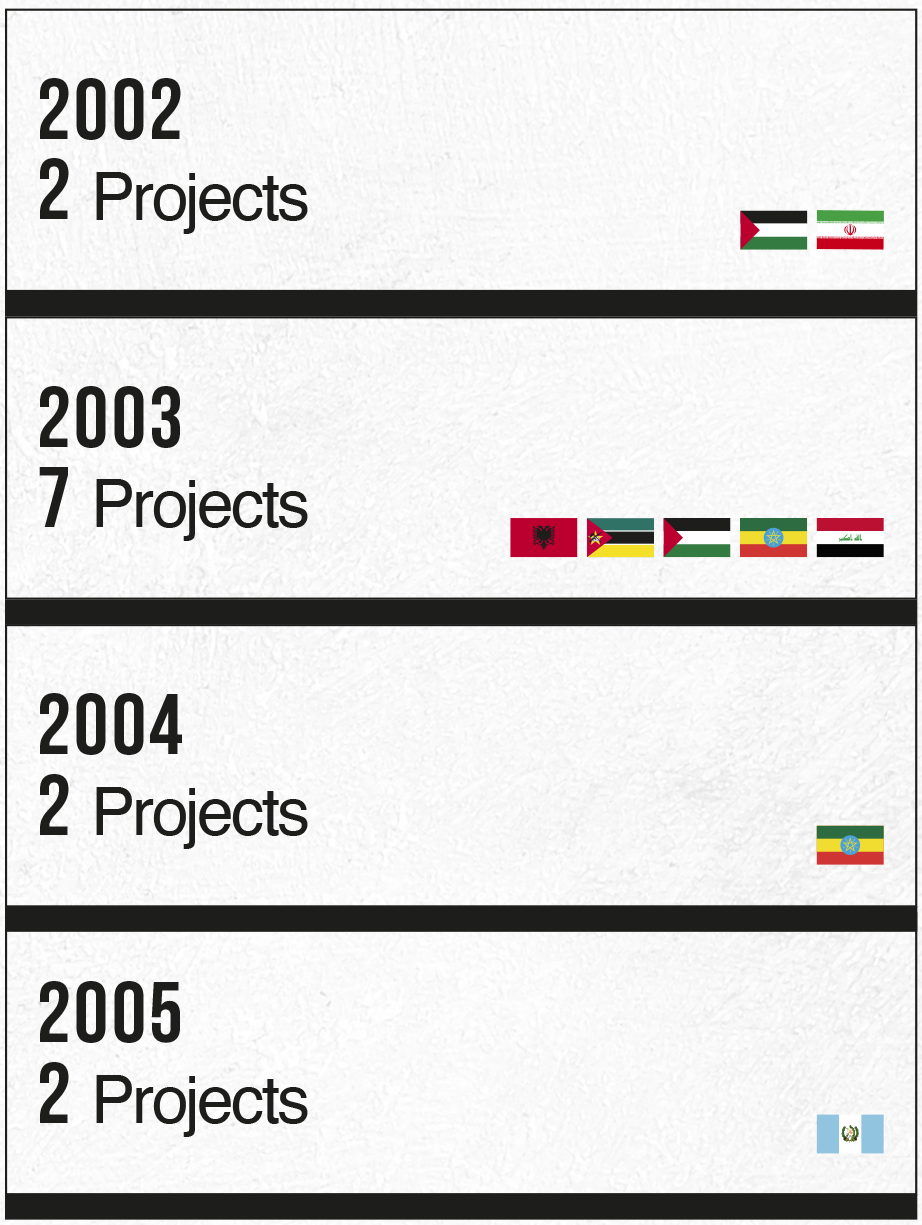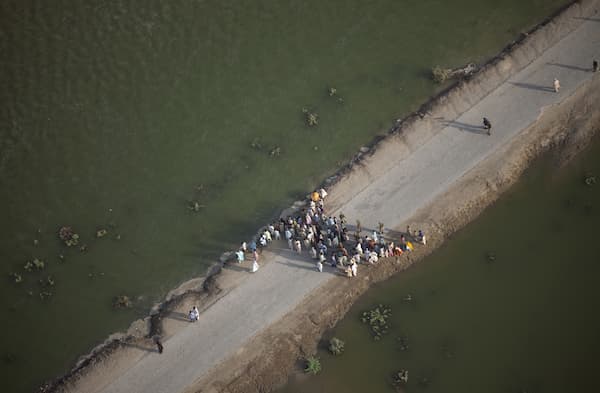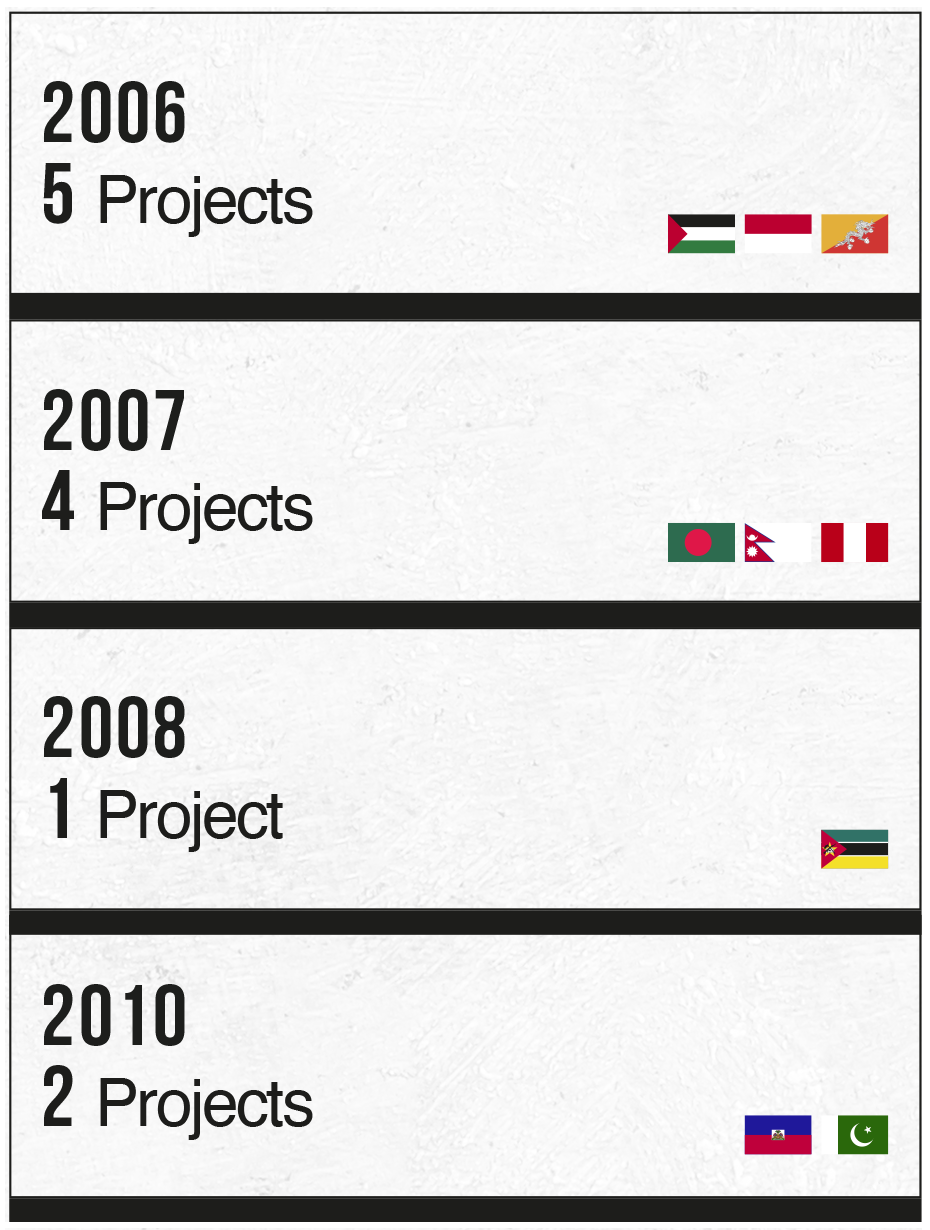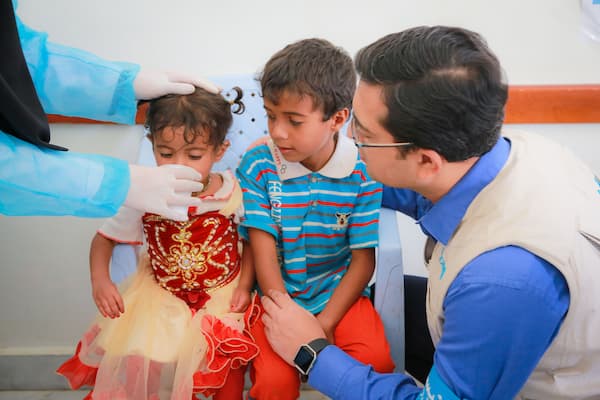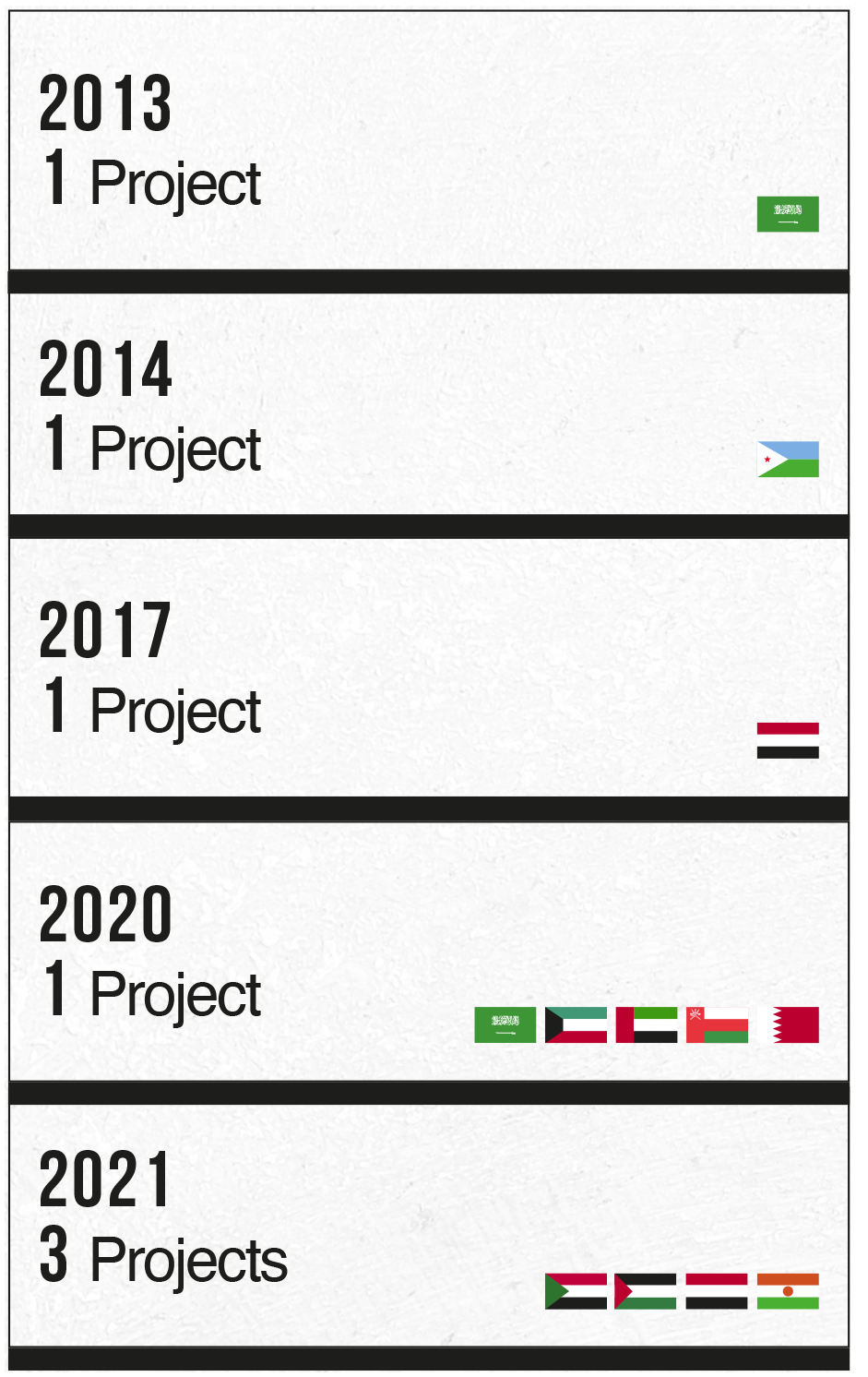In 2010, AGFUND supported UNICEF’s emergency response to floods in Pakistan. Due to disruption in water supplies and sanitation services in flood-affected areas, children, especially those under the age of five, were particularly vulnerable to diseases such as diarrhoea and cholera.
Clean drinking water, sanitation and hygiene kits, vaccinations and medicines, high energy biscuits, treatment for severely malnourished children, and school supplies were needed urgently. UNICEF, along with its partners, supported the provision of safe drinking water, adequate sanitation and hygiene promotion services to more than 1.8 million people. Almost the same number benefited from health supplies through UNICEF-supported medical camps.
In this photo, dated 22 August 2010, a girl looks on in Sukkur, Pakistan, backdropped by a camp for people affected by the floods.


